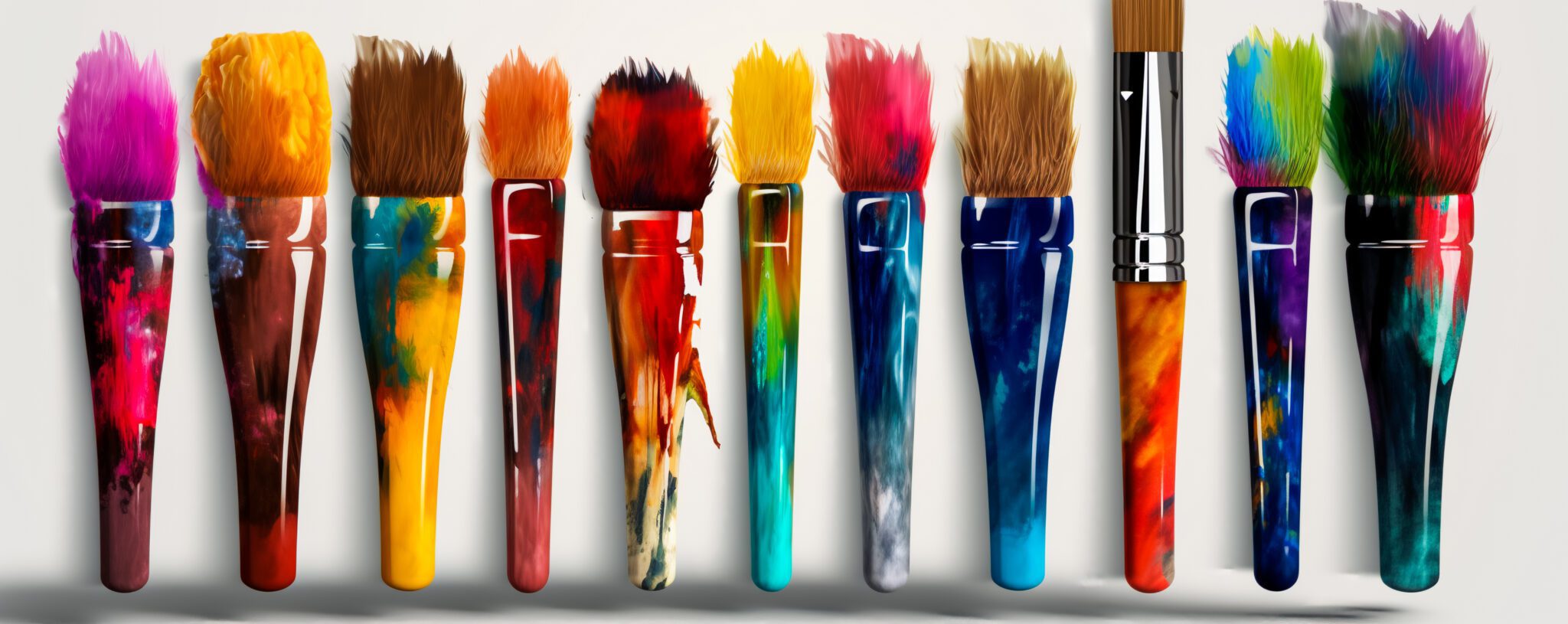Brush shape significantly influences the way artists apply paint, texture, and detail in their work. Two distinctly shaped brushes, the fan brush and the stippling brush, serve different purposes and allow for unique techniques in acrylic painting. In this guide, we will explore the characteristics and uses of both the fan brush and stippling brush, highlighting their techniques and the effects they can achieve in your artwork.
1. Understanding the Brushes
Fan Brush
- Shape and Design: The fan brush has bristles that are arranged in a fanned-out shape, which gives it a unique flat surface and a wide area for application. The bristles are typically shorter, allowing for excellent control.
- Best Uses:
- Creating textures, such as foliage, clouds, and grass
- Blending colors for soft transitions
- Adding highlights and details to painted areas
Stippling Brush
- Shape and Design: The stippling brush features densely packed bristles that are often round or flat-topped. It is specifically designed to create a stippling effect, where small dots or dabs are applied to the canvas.
- Best Uses:
- Creating textures and patterns through dotting
- Softening edges and blending colors
- Producing detailed images through impressionistic techniques
2. Techniques for the Fan Brush
A. Texture Creation
- Foliage and Grass: Use the fan brush in a tapping motion to create the appearance of leaves on trees, grass, and other natural elements. By varying your pressure and angle, you can achieve a natural look that mimics the randomness of nature.
- Clouds and Abstract Designs: Create soft, fluffy clouds by dragging the fan brush lightly across wet paint. The arrangement of the bristles helps in forming subtle transitions that give clouds a soft appearance.
B. Blending Colors
- Wet-on-Wet Technique: While working with wet paint, gently drag the fan brush across the surface where two colors meet to blend them smoothly. This technique is effective for creating atmospheric effects in skies and landscapes.
C. Fine Detailing
- Highlighting: Use the tips of the bristles to add highlights to textured elements by applying a lighter color or a little white paint. This technique can help to bring depth and dimensionality to your artwork.
3. Techniques for the Stippling Brush
A. Dotting Technique
- Creating Patterns: Use the stippling brush to apply small dots of paint in clusters to create texture. This could include adding texture to fur, feathers, or other details that require a more tactile appearance.
- Gradation: Stipple the paint lightly to create a gradient effect by varying the density of the dots. Closer dots create darker areas, while sparse dots provide lighter tones, allowing for a smooth transition in colors.
B. Edge Softening
- Blending and Dulling Hard Edges: The stippling brush is effective for softening the hard edges of painted areas. Use the stippling motion along the edges of shapes to blur transitions and create a gradual change in color.
C. Detailing
- Fine Details with Stippling: For intricate designs, the stippling brush can be used to add fine details without overpowering the existing layers. This is particularly effective in impressionistic styles, where less precision can lead to greater overall impact.
4. Comparing Fan Brush and Stippling Brush Techniques
| Feature | Fan Brush | Stippling Brush |
|---|---|---|
| Shape | Fanned-out bristles | Densely packed, often round or flat |
| Main Use | Textures, blending, highlights | Dotting for texture, softening edges |
| Best For | Natural elements and atmospheric effects | Detailed, impressionistic work |
| Technique Focus | Tapping, dragging, blending | Stippling, dotting |
| Resulting Effect | Soft textures, smooth transitions | Textured patterns, gradations |
5. Conclusion
Both the fan brush and stippling brush provide unique approaches to painting, each with its strengths and preferred applications. Understanding the characteristics and techniques associated with these brushes can greatly enhance your artwork, allowing for dynamic textures, blended colors, and intricate details. Experiment with both brushes to determine how they can best serve your artistic vision.
Don’t forget to explore our selection of fan brushes, stippling brushes, and other essential art supplies available at urartstudio.com to support your creative journey!
Be sure to visit our online store at https://urartstudio.com/shop/ for a variety of art supplies and tools. Additionally, check out valuable painting tips at urartstudio.com/painting-tips/ and our step-by-step painting instructions at https://urartstudio.com/step-by-step-painting-instructions/ to further enhance your skills.
Keywords: fan brush, stippling brush, acrylic painting techniques, texture creation, blending.
#FanBrush, #StipplingBrush, #AcrylicPainting, #TextureCreation, #Blending #ArtSupplies



Leave a Reply
You must be logged in to post a comment.